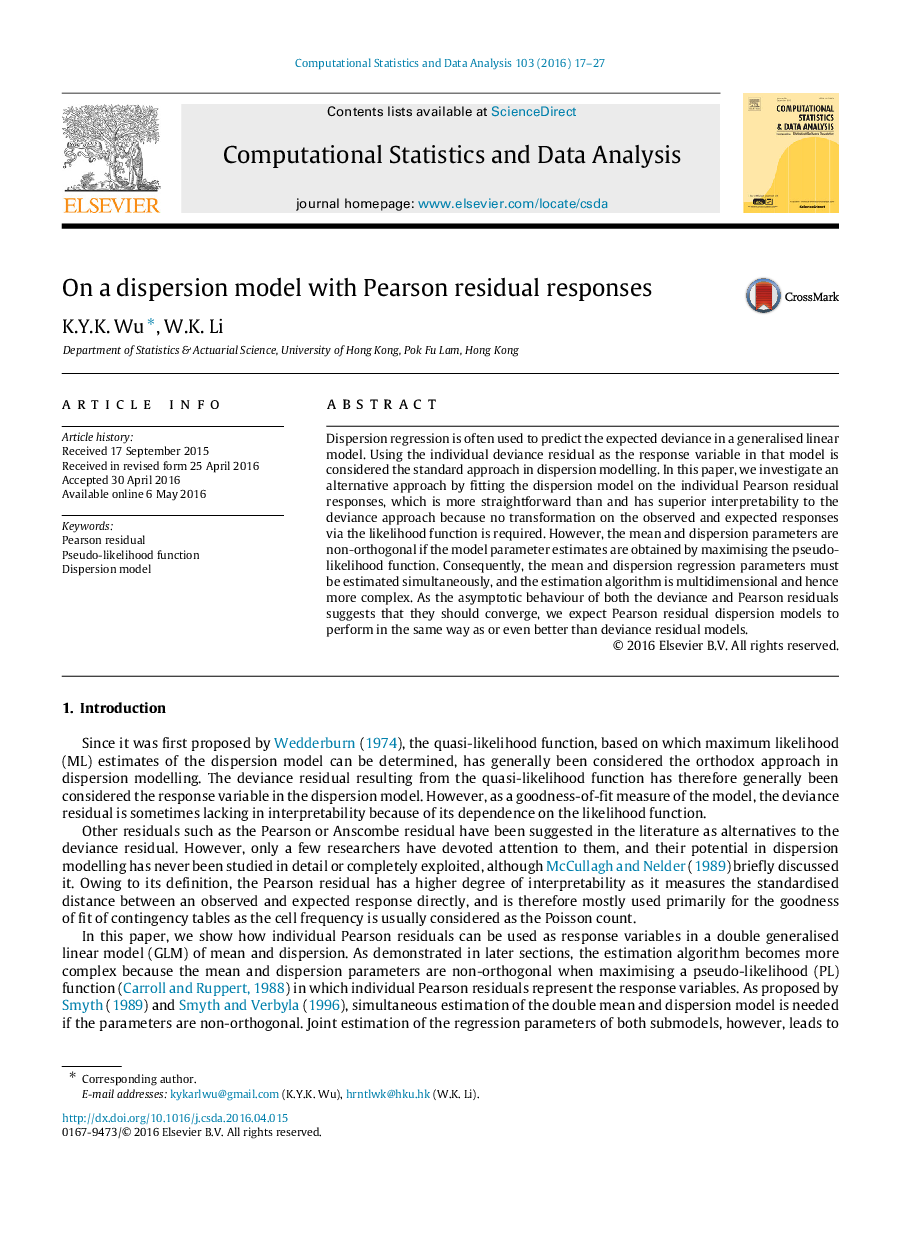| Article ID | Journal | Published Year | Pages | File Type |
|---|---|---|---|---|
| 415263 | Computational Statistics & Data Analysis | 2016 | 11 Pages |
Dispersion regression is often used to predict the expected deviance in a generalised linear model. Using the individual deviance residual as the response variable in that model is considered the standard approach in dispersion modelling. In this paper, we investigate an alternative approach by fitting the dispersion model on the individual Pearson residual responses, which is more straightforward than and has superior interpretability to the deviance approach because no transformation on the observed and expected responses via the likelihood function is required. However, the mean and dispersion parameters are non-orthogonal if the model parameter estimates are obtained by maximising the pseudo-likelihood function. Consequently, the mean and dispersion regression parameters must be estimated simultaneously, and the estimation algorithm is multidimensional and hence more complex. As the asymptotic behaviour of both the deviance and Pearson residuals suggests that they should converge, we expect Pearson residual dispersion models to perform in the same way as or even better than deviance residual models.
